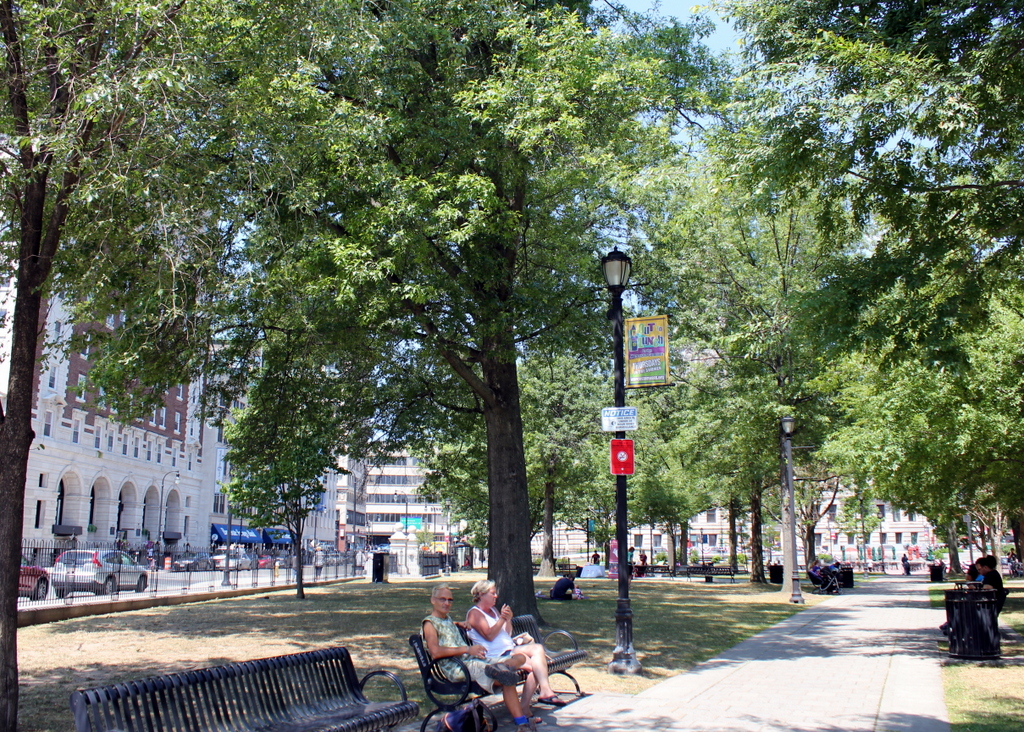The Worcester Common, seen facing west from the corner of Franklin and Church Streets, around 1914-1920. Image courtesy of the Library of Congress, Detroit Publishing Company Collection.
The Common in 2016:

Today, Worcester is the second-largest city in New England, and the Common has been at the center of the city ever since it was a small colonial settlement in the 17th century. Set aside in 1669, more than 50 years before Worcester was formally incorporated as a town, the Common was originally used as a training ground for the militia, burial ground, and the site of the meetinghouse. It was once much larger, but as the city has grown up around it, this common land has steadily shrunk to its current dimensions, and at one point in the 19th century even had railroad tracks running across it.
The first photo was taken shortly after the completion of several prominent buildings along the Common, which are still standing today. These buildings, designed in the popular Classical Revival style of the turn of the 20th century, include the 1913 Bancroft Hotel on the left, the 1915 Park Building to the right of it, and the 1898 City Hall, which is mostly hidden by trees in the distance on the right. Along with the Common itself, all three of these buildings are now listed on the National Register of Historic Places.


I think that all that is old and good – it doesn’t have to be great, and a lot of common stuff is worthy for its increasing scarcity, should be preserved. I just LOVE seeing traces, and complete examples, of the trends and minds and work of decades and centuries past. They are windows into that past, which give us roots. They remind us that we are a PART of history, and life in that very place and on that very land. I truly mourn when I see something which stood, sometimes for centuries, something which represents our former, ancestral lives, bulldozed into oblivion! Those traces, buildings, streets, views, etc. should be preserved, even if at some cost. In a very real sense, those traces – and examples – of what we as a people produced in the past make us whole.
Worcester was not settled (and impermanently) until 1673, permanently in 1713. No one can explain how the common was established in 1669, with no one living here…?!
From Preservation Worcester:
As you begin your walk through the Common, you may be surprised to learn that the spot where you are standing is a physical link with the days when Massachusetts was still an English colony. Today’s Worcester Common is part of a tract of land set aside over 300 years ago as the town common of a settlement attempted here in 1663 –when this area was still a wilderness. Although that attempted settlement failed two years later, and a second attempt failed again in 1704, that original “common” tract finally became the town common for a successful settlement, begun in 1713 – which resulted in Worcester’s official establishment as a town in 1722.